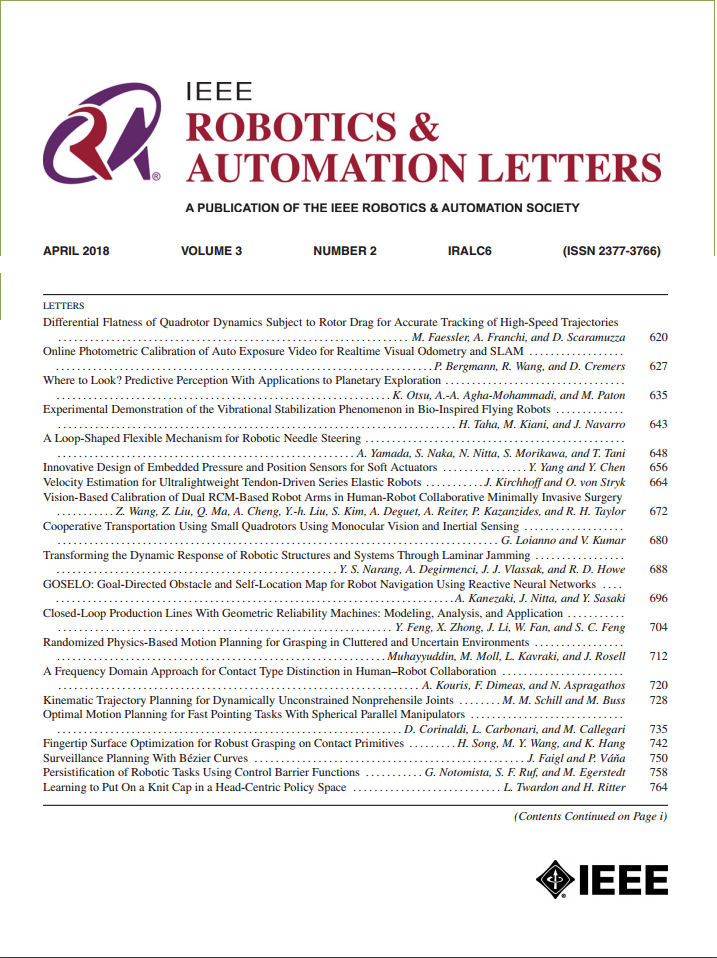DiffRP: Diffusion-Driven Promising Region Prediction for Sampling-Based Path Planning
IF 5.3
2区 计算机科学
Q2 ROBOTICS
引用次数: 0
Abstract
Utilizing neural networks to predict potential regions containing optimal paths in advance and subsequently biasing the sampling probability towards these promising regions has been proven to effectively enhance the path planning efficiency of sampling-based algorithms. Undoubtedly, the accuracy of the promising regions is of paramount importance. Currently, the generalizability of many CNN- or Transformer-based models remains limited, often performing poorly in unknown environments. To enhance generalization capability, we reformulate the promising region prediction problem as a conditional generation task and address it using a diffusion model, referred to as the DiffRP (Diffusion-based Region Prediction). We propose three paradigms for generating promising regions, among which we innovatively introduce a biased noise initialization method for the diffusion process. Specifically, we bias the mean of the noise distribution using obstacle maps and design a map-conditioned denoising model to progressively generate accurate promising regions from the biased noise. Experiments on public datasets demonstrate that our proposed DiffRP method outperforms existing state-of-the-art models by 35DiffRP:基于采样的路径规划的扩散驱动有希望区域预测
利用神经网络预先预测包含最优路径的潜在区域,然后将采样概率偏向于这些有希望的区域,已被证明可以有效地提高基于采样的算法的路径规划效率。毫无疑问,有希望的地区的准确性至关重要。目前,许多基于CNN或transformer的模型的泛化能力仍然有限,通常在未知环境中表现不佳。为了提高泛化能力,我们将有希望区域预测问题重新表述为条件生成任务,并使用扩散模型(称为DiffRP)来解决它。我们提出了三种生成有希望区域的范式,其中我们创新地引入了一种用于扩散过程的偏置噪声初始化方法。具体来说,我们使用障碍图对噪声分布的平均值进行偏置,并设计了一个基于地图条件的去噪模型,从偏置的噪声中逐步产生准确的有希望的区域。在公共数据集上的实验表明,我们提出的DiffRP方法在有希望的区域预测精度方面比现有的最先进的模型高出35$\sim$42%。此外,基于该区域的非均匀采样算法(DiffRP-RRT*)与其他神经网络驱动的方法相比,样本数量减少了3.52%。
本文章由计算机程序翻译,如有差异,请以英文原文为准。
求助全文
约1分钟内获得全文
求助全文
来源期刊

IEEE Robotics and Automation Letters
Computer Science-Computer Science Applications
CiteScore
9.60
自引率
15.40%
发文量
1428
期刊介绍:
The scope of this journal is to publish peer-reviewed articles that provide a timely and concise account of innovative research ideas and application results, reporting significant theoretical findings and application case studies in areas of robotics and automation.
 求助内容:
求助内容: 应助结果提醒方式:
应助结果提醒方式:


